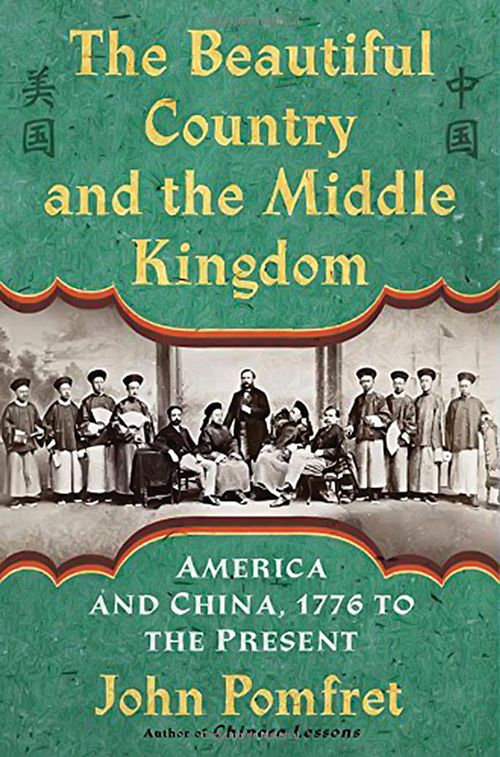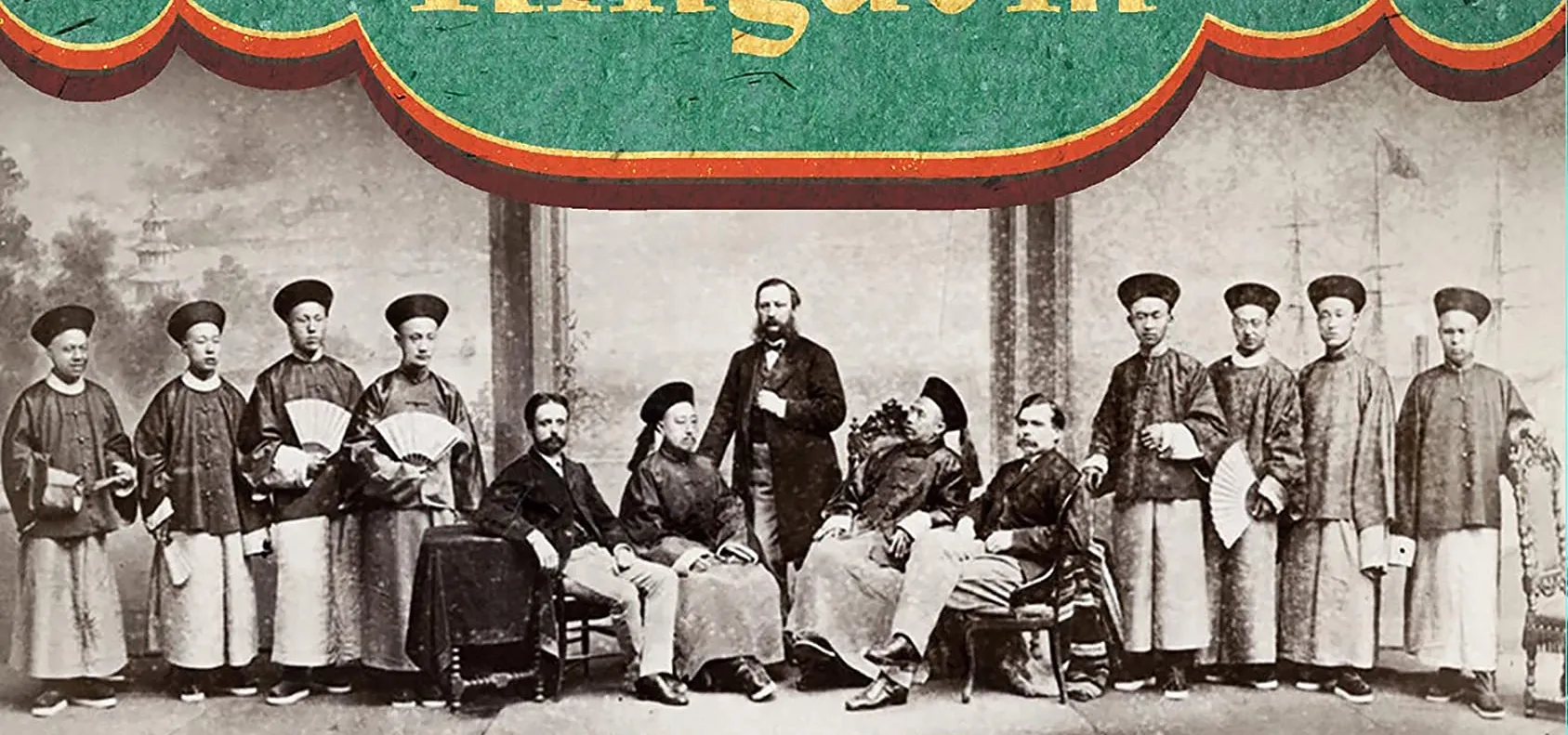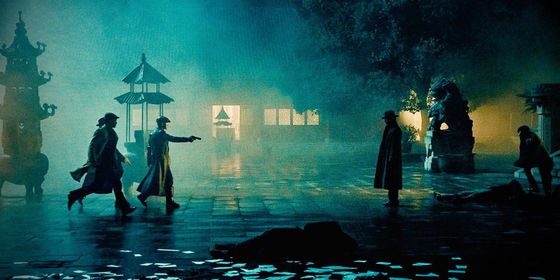With US-China relations facing fresh challenges, a new book ponders if history offers clues to its future
On February 22, 1784, the merchant ship Empress of China set sail from New York loaded with Appalachian ginseng, beaver skins, American whiskey, and 20,000 Mexican silver dollars, all bound for the great entrepôt of Canton, now known as Guangzhou.
Thus began the relationship between an upstart nation eager to prove itself on the world stage and an established, if somewhat declining global power. Three centuries later, the relationship is no less fraught—though the roles may be somewhat reversed,
John Pomfret’s highly anticipated new book, The Beautiful Country and the Middle Kingdom: America and China 1776 to the Present, opens with the voyage of the Empress and concludes as the effects of China’s 2015 stock-market stumble ripple through the New York Stock Exchange. It is a sweeping and ambitious book, one which, Pomfret has admitted in interviews, “cost me one very good job and two equally good job opportunities.”

Henry Holt and Co., November 29, 2016
Pomfret is no stranger to China, having covered the country for nearly two decades as a correspondent for the Washington Post. He was also one of the first American students to study in the People’s Republic of China after it normalized relations with the United States in 1979, an experience he wrote about in his debut book, Chinese Lessons.
In many ways, Pomfret’s latest book is an update on John King Fairbank’s classic The United States and China, first published in 1948, editions of which became a core text in 20th-century university classrooms both in the United States and even, in remarkably faithful translation, China.
In The United States and China and his seminal Trade and Diplomacy on the China Coast: The Opening of the Treaty Ports, 1842 – 1854, Fairbank described how the “impact” of Western modernity in the 19th century shocked China out of a hidebound dynastic cycle. The story of China’s modern history is then one of the Chinese “response” to this traumatic turn of events.
But although Pomfret moves this prominent relationship forward into the 21st century, many of the underlying assumptions of his book remain stuck in this distinctly 20th century “impact-response” framework. By attempting to demonstrate the role that Americans played in China’s development, Pomfret is perhaps guilty of leaning too far to one side, to borrow a phrase.
Pomfret rightfully highlights the significant contributions to Chinese history by Americans such as the missionary educator Adele Fields and backwoods preacher Issachar Roberts, as well as Chinese with strong American connections such as the doctor Mary Stone (also known as Shi Meiyu, 石美玉), intellectual Luo Longji (罗隆基), and philosopher-playwright-diplomat Pengchung Chang
(张彭春). But placing Americans or American influence at the center of almost every major event in China over the past three centuries presents a skewed portrait of modern Chinese history, especially in the centuries prior to America’s emergence as a global superpower.
For example, the writings and counsel of American political scientist Frank Goodnow certainly influenced—or at least provided justification for—the warlord politician Yuan Shikai’s ill-advised attempt to restore the monarchy after the demise of the Qing dynasty, with Yuan himself as emperor, in 1915 to 1916. But there were other forces, including the dynamics within Yuan’s immediate circle of allies and even his own family, that also convinced Yuan to try to seize the throne.
At over 704 pages, Pomfret’s book tries to make the case that the relationship between the US and China is indeed a special one. American exceptionalists have long put forth the idea that the United States stood apart from the imperialist powers of Europe (and, later, Japan) in their dealings with China. In a similar line of argument, Pomfret takes great pains to distinguish American activities and attitudes toward China with those of other major countries of the world.
Certainly, each country dealt with China in its own way. There is no monolithic “West.” But is this notion of a special relationship a distinction without substance? For example, in describing the role American Christianity played in China, Pomfret argues that the missionaries, “often held up as an unbecoming example of American cultural imperialism, forcing Jesus on an unwilling people steeped in an older Confucian creed, were crucial to China’s development.”
Pomfret even goes so far as to credit these American missionaries with “helping to accomplish the greatest human rights advances in modern Chinese history” by campaigning against female infanticide and foot binding. This is a noble cause, and many missionaries thought they were doing God’s work, but from the perspective of a great deal of people in China, the missionaries were only there because of treaties signed with the imperialist powers, and enforced under threat of foreign military intervention.
There were distinctions made between the various foreign powers, especially by those members of the elite who had a broader understanding of the world, but that would not have made much of a difference to many members of society who perceived all foreigners—missionary or otherwise, American or not—as a threat.
Moreover, throughout the book there is an explicit conflation of modernization with Westernization—one of the main criticisms that later historians leveled at Fairbank’s studies. In the wake of the Qing emperor’s failed Hundred Days’ Reform of 1898, Pomfret argues that “the idea that China needed to embrace Western-oriented change burrowed deep into China’s soil, where it contended with the opposing view—that China should exterminate the foreigners and shut its doors to the West.”
Is there no other option? If we are, after Fairbank, to take the “impact” of the West as a starting point, couldn’t we argue that China’s response has been a long-term project to build a strong, united, and independent nation which is both fully modern and fully Chinese?
Pomfret is correct when he argues that the difficulties in the US-Chinese relationship are a product of expectations raised and dashed on both sides. But China’s disenchantment with the US is not just a result of Americans failing to live up to their exceptionalist self-image but also a reflection of the extent to which the West, including the United States, has gaslighted the Chinese in the past into internalizing foreign critiques of their own “backwardness.” These critiques were then encoded into a definition of modernity which is ultimately dependent on the criteria of others—thus forever just out of reach.
As China looks to recast the relationship with the US and the rest of the world in the 21st century, it is also reevaluating what it means to be “modern.” The idea that there can be progress in China independent of exterior definitions of modernity will present as much of a challenge to the global order as the ongoing rebalance of economic and political influence around the world.
Great Expectations is a story from our issue, “Wheel Life China.” To read the entire issue, become a subscriber and receive the full magazine.




![truecrime-podcast-covewr]](https://cdn.theworldofchinese.com/media/images/truecrime-podcast-covewr.format-jpeg.width-325.jpg)







